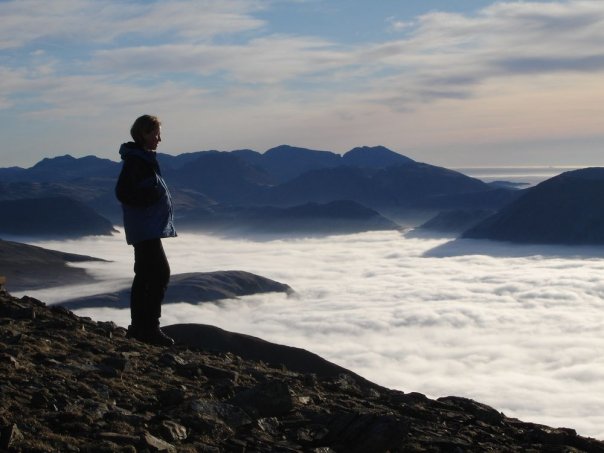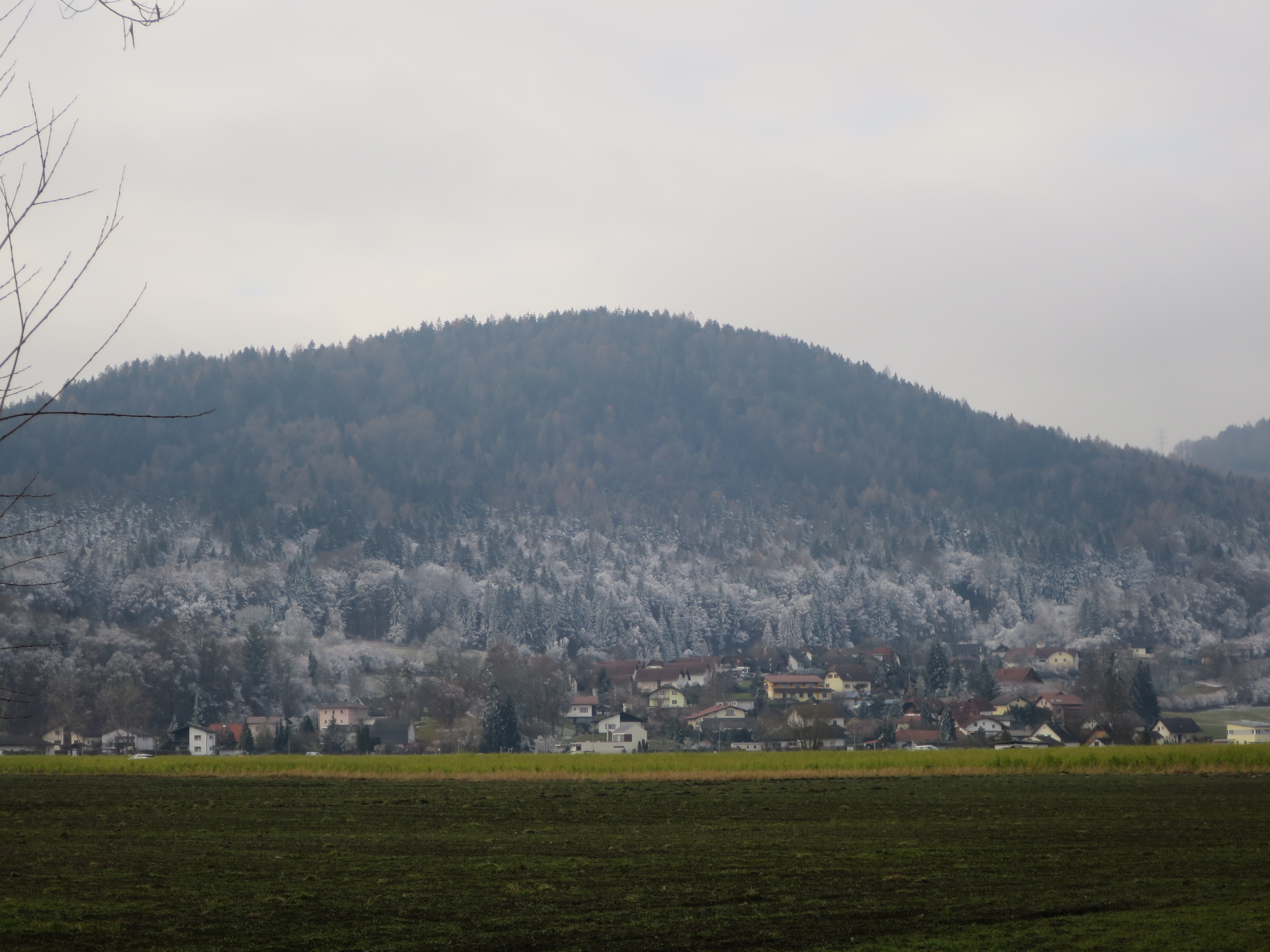Inversion (meteorology) on:
[Wikipedia]
[Google]
[Amazon]




 In
In
 Under the right conditions, the normal vertical temperature gradient is inverted so that the air is colder near the surface of the Earth. This can occur when, for example, a warmer, less-dense air mass moves over a cooler, denser air mass. This type of inversion occurs in the vicinity of warm fronts, and also in areas of oceanic
Under the right conditions, the normal vertical temperature gradient is inverted so that the air is colder near the surface of the Earth. This can occur when, for example, a warmer, less-dense air mass moves over a cooler, denser air mass. This type of inversion occurs in the vicinity of warm fronts, and also in areas of oceanic
'Fire inversions' lock smoke in valleys
* {{Commons category, Meteorological inversion Atmospheric thermodynamics Radio frequency propagation




 In
In meteorology
Meteorology is the scientific study of the Earth's atmosphere and short-term atmospheric phenomena (i.e. weather), with a focus on weather forecasting. It has applications in the military, aviation, energy production, transport, agricultur ...
, an inversion (or temperature inversion) is a phenomenon in which a layer of warmer air overlies cooler air. Normally, air temperature gradually decreases as altitude
Altitude is a distance measurement, usually in the vertical or "up" direction, between a reference datum (geodesy), datum and a point or object. The exact definition and reference datum varies according to the context (e.g., aviation, geometr ...
increases, but this relationship is reversed in an inversion.
An inversion traps air pollution
Air pollution is the presence of substances in the Atmosphere of Earth, air that are harmful to humans, other living beings or the environment. Pollutants can be Gas, gases like Ground-level ozone, ozone or nitrogen oxides or small particles li ...
, such as smog, near the ground. An inversion can also suppress convection
Convection is single or Multiphase flow, multiphase fluid flow that occurs Spontaneous process, spontaneously through the combined effects of material property heterogeneity and body forces on a fluid, most commonly density and gravity (see buoy ...
by acting as a "cap". If this cap is broken for any of several reasons, convection of any humidity
Humidity is the concentration of water vapor present in the air. Water vapor, the gaseous state of water, is generally invisible to the human eye. Humidity indicates the likelihood for precipitation (meteorology), precipitation, dew, or fog t ...
can then erupt into violent thunderstorms. Temperature inversion can cause freezing rain in cold climates.
Normal atmospheric conditions
Usually, within the lower atmosphere (thetroposphere
The troposphere is the lowest layer of the atmosphere of Earth. It contains 80% of the total mass of the Atmosphere, planetary atmosphere and 99% of the total mass of water vapor and aerosols, and is where most weather phenomena occur. From the ...
) the air near the surface of the Earth
Earth is the third planet from the Sun and the only astronomical object known to Planetary habitability, harbor life. This is enabled by Earth being an ocean world, the only one in the Solar System sustaining liquid surface water. Almost all ...
is warmer than the air above it, largely because the atmosphere is heated from below as solar radiation warms the Earth's surface, which in turn then warms the layer of the atmosphere directly above it, e.g., by thermals ( convective heat transfer). Air temperature also decreases with an increase in altitude because higher air is at lower pressure, and lower pressure results in a lower temperature, following the ideal gas law
The ideal gas law, also called the general gas equation, is the equation of state of a hypothetical ideal gas. It is a good approximation of the behavior of many gases under many conditions, although it has several limitations. It was first stat ...
and adiabatic lapse rate.
Description
upwelling
Upwelling is an physical oceanography, oceanographic phenomenon that involves wind-driven motion of dense, cooler, and usually nutrient-rich water from deep water towards the ocean surface. It replaces the warmer and usually nutrient-depleted sur ...
such as along the California coast in the United States. With sufficient humidity in the cooler layer, fog is typically present below the inversion cap. An inversion is also produced whenever radiation from the surface of the earth exceeds the amount of radiation received from the sun, which commonly occurs at night, or during the winter when the sun is very low in the sky. This effect is virtually confined to land regions as the ocean retains heat far longer. In the polar regions during winter, inversions are nearly always present over land.
A warmer air mass moving over a cooler one can "shut off" any convection which may be present in the cooler air mass: this is known as a capping inversion. However, if this cap is broken, either by extreme convection overcoming the cap or by the lifting effect of a front or a mountain range, the sudden release of bottled-up convective energy—like the bursting of a balloon—can result in severe thunderstorms. Such capping inversions typically precede the development of tornadoes in the Midwestern United States. In this instance, the "cooler" layer is quite warm but is still denser and usually cooler than the lower part of the inversion layer capping it.
Subsidence inversion
An inversion can develop aloft as a result of air gradually sinking over a wide area and being warmed by adiabatic compression, usually associated with subtropical high-pressure areas. A stable marine layer may then develop over the ocean as a result. As this layer moves over progressively warmer waters, however, turbulence within the marine layer can gradually lift the inversion layer to higher altitudes, and eventually even pierce it, producing thunderstorms, and under the right circumstances,tropical cyclone
A tropical cyclone is a rapidly rotating storm system with a low-pressure area, a closed low-level atmospheric circulation, strong winds, and a spiral arrangement of thunderstorms that produce heavy rain and squalls. Depending on its locat ...
s. The accumulated smog and dust under the inversion quickly taints the sky reddish, easily seen on sunny days.
Atmospheric consequences
Temperature inversions stop atmospheric convection (which is normally present) from happening in the affected area and can lead to high concentrations of atmospheric pollutants. Cities especially suffer from the effects of temperature inversions because they both produce more atmospheric pollutants and have higher thermal masses than rural areas, resulting in more frequent inversions with higher concentrations of pollutants. The effects are even more pronounced when a city is surrounded by hills or mountains since they form an additional barrier to air circulation. During a severe inversion, trapped air pollutants form a brownish haze that can cause respiratory problems. The Great Smog of 1952 inLondon
London is the Capital city, capital and List of urban areas in the United Kingdom, largest city of both England and the United Kingdom, with a population of in . London metropolitan area, Its wider metropolitan area is the largest in Wester ...
, England, is one of the most serious examples of such an inversion. It was blamed for an estimated 10,000 to 12,000 deaths.
Sometimes the inversion layer is at a high enough altitude that cumulus cloud
Cumulus clouds are clouds that have flat cloud base, bases and are often described as puffy, cotton-like, or fluffy in appearance. Their name derives from the Latin , meaning "heap" or "pile". Cumulus clouds are low-level clouds, generally less ...
s can condense but can only spread out under the inversion layer. This decreases the amount of sunlight reaching the ground and prevents new thermals from forming. As the clouds disperse, sunny weather replaces cloudiness in a cycle that can occur more than once a day.
In winter, an inversion can lead to the development of ice pellets and freezing rain. Both these phenomena occur when snow melts in a warm layer aloft and falls into a colder layer near the surface. If the layer of cold air near the surface is thick enough, it will lead to the development of ice pellets as the raindrops re-freeze. A shallow layer does not give the raindrops enough time to freeze as they quickly fall through it, leading to the development of freezing rain.
Wave propagation
Light
As the temperature of air increases, the index of refraction of air decreases, a side effect of hotter air being less dense. Normally this results in distant objects being shortened vertically, an effect that is easy to see at sunset when the sun is visible as an oval. In an inversion, the normal pattern is reversed, and distant objects are instead stretched out or appear to be above the horizon, leading to thephenomenon
A phenomenon ( phenomena), sometimes spelled phaenomenon, is an observable Event (philosophy), event. The term came into its modern Philosophy, philosophical usage through Immanuel Kant, who contrasted it with the noumenon, which ''cannot'' be ...
known as a Fata Morgana or mirage.
Inversions can magnify the so-called " green flash"—a phenomenon occurring at sunrise or sunset, usually visible for a few seconds, in which the sun's green light is isolated due to dispersion. The shorter wavelength is refracted most, with the blue component of sunlight "completely scattered out by Rayleigh scattering", making green the first or last light from the upper rim of the solar disc to be seen.
Radio waves
Very high frequency radio waves can be refracted by inversions, making it possible to hear FM radio or watch VHF low-band television broadcasts from long distances on foggy nights. The signal, which would normally be refracted up and away into space, is instead refracted down towards the earth by the temperature-inversion boundary layer. This phenomenon is called tropospheric ducting. Along coastlines during Autumn and Spring, due to multiple stations being simultaneously present because of reduced propagation losses, many FM radio stations are plagued by severe signal degradation disrupting reception. In higher frequencies such as microwaves, such refraction causes multipath propagation and fading.Sound
When an inversion layer is present, if a sound or explosion occurs at ground level, the sound wave is refracted by the temperature gradient (which affects sound speed) and returns to the ground. The sound, therefore, travels much better than normal. This is noticeable in areas around airports, where the sound of aircraft taking off and landing often can be heard at greater distances around dawn than at other times of day, and inversion thunder which is significantly louder and travels further than when it is produced by lightning strikes under normal conditions.Shock waves
Theshock wave
In physics, a shock wave (also spelled shockwave), or shock, is a type of propagating disturbance that moves faster than the local speed of sound in the medium. Like an ordinary wave, a shock wave carries energy and can propagate through a me ...
from an explosion can be reflected by an inversion layer in much the same way as it bounces off the ground in an air-burst and can cause additional damage as a result. This phenomenon killed two people in the Soviet
The Union of Soviet Socialist Republics. (USSR), commonly known as the Soviet Union, was a List of former transcontinental countries#Since 1700, transcontinental country that spanned much of Eurasia from 1922 until Dissolution of the Soviet ...
RDS-37 nuclear test when a building collapsed.
See also
*Aerosol
An aerosol is a suspension (chemistry), suspension of fine solid particles or liquid Drop (liquid), droplets in air or another gas. Aerosols can be generated from natural or Human impact on the environment, human causes. The term ''aerosol'' co ...
* Particulates
* Index of meteorology articles
References
External links
'Fire inversions' lock smoke in valleys
* {{Commons category, Meteorological inversion Atmospheric thermodynamics Radio frequency propagation